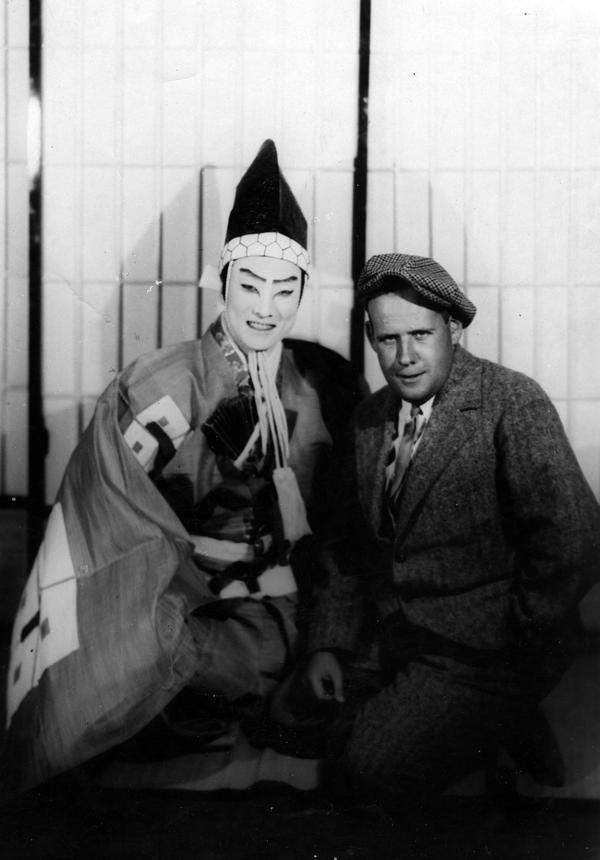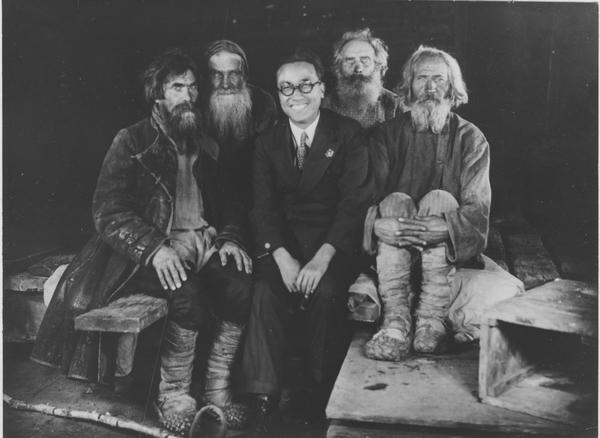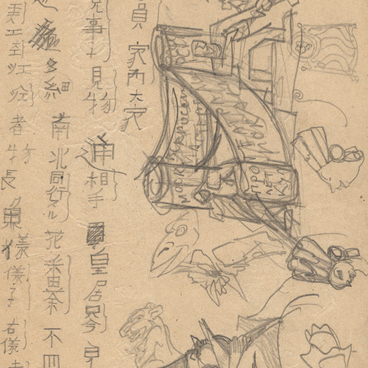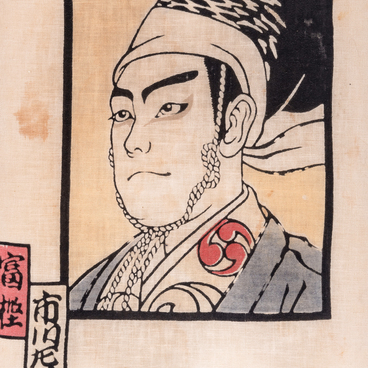In 1928, during the Kabuki tour, Sergei Mikhailovich became friends with the leader of the troupe and with its actors, among whom Chôjûrô Kawarasaki stood out. The young luminary of ‘Kabukiza’, in his turn, was interested in Eisenstein’s works and visited the set of his film. This friendship between the “star” of Japanese theater and the innovative Soviet director was not an accident. Kawarasaki was among those who reinvented the art of Kabuki and brought its legacy into cinema. He was filmed by the great directors Sadao Yamanaka and Kenji Mizoguchi. In 1941, he played the role of ronin Kuranosuke Oishi in Mizoguchi’film Genroku Chûshingura (The 47 Ronin) based on one of the Kabuki plays which Sadanji’s troupe performed in Moscow. In his article “An Unexpected Juncture” (1929), Eisenstein wrote that the play Kanadehon Chûshingura suggested figurative use of sound in cinema to him.
Eisenstein with the actor Chôjûrô Kawarasaki
Creation period
Moscow. 1928
Technique
paper, black and white photo printing
Collection
Exhibition
6
Open in app#1
Eisenstein with the actor Chôjûrô Kawarasaki. Moscow, 1928
#2
#3
The actor Chôjûrô Kawarasaki is surrounded by Russian peasants, the heroes of The General Line.
The young star of “Kabukiza” was interested in Eisenstein’s art and visited the set of The General Line.
#4
A photo of Kawarasaki with a dedication to Eisenstein.
The Japanese actor inscribed his photo for Sergei Mikhailovich in Japanese: ‘To a great friend S.M. Eisenstein, whom I found in Russia.’: Subsequently, the photograph hung in the director’s apartment on Potylikha Street.
read morehide
Eisenstein with the actor Chôjûrô Kawarasaki
Creation period
Moscow. 1928
Technique
paper, black and white photo printing
Collection
Exhibition
6
Open in app
Share





